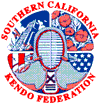SCKF Budget Committee
Budget Committee Timeline and Schedule
(preliminary thoughts)
- May: Kick off budget committee.
- Jun: SCKF or committee agreement on timeline.
- Jul: Agreement by SCKF Board of Mission/Purpose Statement.
- Aug: Agreement on areas of stakeholder interests and their weighting (%)
- Sep: Agreement of Aims and specific measurable objectives; SCKF board
informed
- Oct: Part I-agreement of allocated budget against the aims/objectives;
Board agreement
- Nov: Part II-agreement of allocated budget against the aims/objectives;
Board agreement.
- Dec: Final Budget agreement and go-ahead for committees to plan accordingly
for the next (and future) fiscal years; Board agreement
The above milestones include development of any relevant supporting documents
and procedures.
Subject: SCKF Notional Framework for a Budget
From: Bill Kaneshiro
(first discussed at 5/13/17 SCKF BoD meeting)
Jean: As promised, some thoughts on the SCKF Budget as we briefly discussed
last week...
In order to put some semblance of a disciplined framework for our SCKF finances
and budget outlays, a few things need to be considered. First, "What is the
purpose of the enterprise?" Next, "What are the organization’s goals (aims)/
objectives?" And related to that, "Who are the stakeholders of the SCKF, and
what are their interests?"
Here is a notional set of answers which will ultimately need to be vetted with
the Board Members and made consistent with any approved charters/documentation
of the SCKF. This example may provide insight on the thinking that should go
into an eventual federation budget.
- SCKF Purpose:
- To promote, encourage, and sustain the development of kendo, and of its
supporting organizations and practitioners, in the Southern California
region consistent with its cultural, philosophical, and martial art
traditions.
- SCKF Aim/Objectives
- Aim: Promote kendo in the community thru philanthropic events and
exposure in media
- Objective: SCKF support to community kendo events for each member
dojo—at least two events per dojo separate from existing community
center annual fundraising events (e.g. Obon demonstrations)
- Objective: SCKF support to kendo demonstration events to local
community institutions, e.g. Senior Assisted Living Facilities,
children disability orgs, Boy/Girl Scouts, Church/Temple, Nisei
Week, City Events, etc. -- 10 new events in 2018
- Objective: SCKF support to exposure of kendo in Web-based media,
television, other media- local, state, national, international
-- 5-10 instances
- Objective: 20% Increase in SCKF membership in 2 years
- Aim: Encourage the membership in the SCKF through value-adding and
readily identifiable support
- Objective: Reduce the membership "drop-rate" year-to-year by 20%
- Objective: Perform outreach to newer/smaller/remote dojos -- 100%
in the year
- Objective: Provide equipment to dojos in need -- for each new/young
dojo requesting assistance
- Aim: Sustain the SCKF and its membership organizations and practitioners
- Objective: Conduct training seminars for select membership
demographics -- 2 or more times a year
- Objective: Conduct competitions/events wherein all kenshi and
referees, have opportunities to build comraderie, learn from each
other, identify with and enjoy the experience -- 3-4 per year at
various levels
- Objective: Conduct academic seminars on Budo, Kendo,
kinesiology/sports science, related topics by experts from around
the nation/world -- kendoists, scholars, historians, culture
specialists, et al -- 2x per year open to the public
- Stakeholders and Interests
- Stakeholders
- Dojos
- Kendoists
- Community Centers
- City
- AUSKF
- Other regional federations
- International Kendo organizations
- Parents
- Institutions (Schools, Colleges, companies, gov't (consulates,
military, security forces, etc.), Cultural/Historical Societies
(e.g. Japan Society, Museums, Military Arts History organizations,
etc. )
- Interests, i.e. why people are interested in kendo:
- Exercise
- Opportunity to compete (individual, team)
- Build skill in a traditional martial art
- Intellectual—culture, philosophy, history, art
- Social
- Building strength in community diversity
- Supporting Youth
- Supporting Seniors
- Teach/instruct/mentor youth, adults,
- Pass on the art to next generation as they've been taught/Learn
from those who are passing the art
- Travel
- Friends (local, in state, nationally, internationally)
- Cultural enrichment
- etc.
The interests of the stakeholders should help identify where the Goals
(aims)/Objectives might be year-to-year. In fact, the aims may be fixed
and the objectives adjusted periodically.
Here's a notional Budget and their categories that takes into account some of
the things above:
- Tournaments: 40%
- Outreach: 10%
- Representational: 5%
- Education -- For instructing, training: 20%
- Academic/Cultural Seminars: 10%
- Stakeholder Relations (or, organizational investments): 5%
- Community/City Support: 10%
This would be adjust according to year-end results and time deemed necessary
to reach goals/objectives.
The above is just a quick example of the basic framework and how it might fit
together. To be clear, this would have to be validated with the Board members.
The first year, could be a trial and we can adjust as needed going forward.
Sorry for the length, but this is the gist of what I was thinking last week.
Feel free to share widely. Feedback is always welcomed. Hope this helps.
- Bill
Zero-Based Budgeting
Some notes on zero-based budgeting (see
article)
[
SCKF home page
disclaimer
]
|


